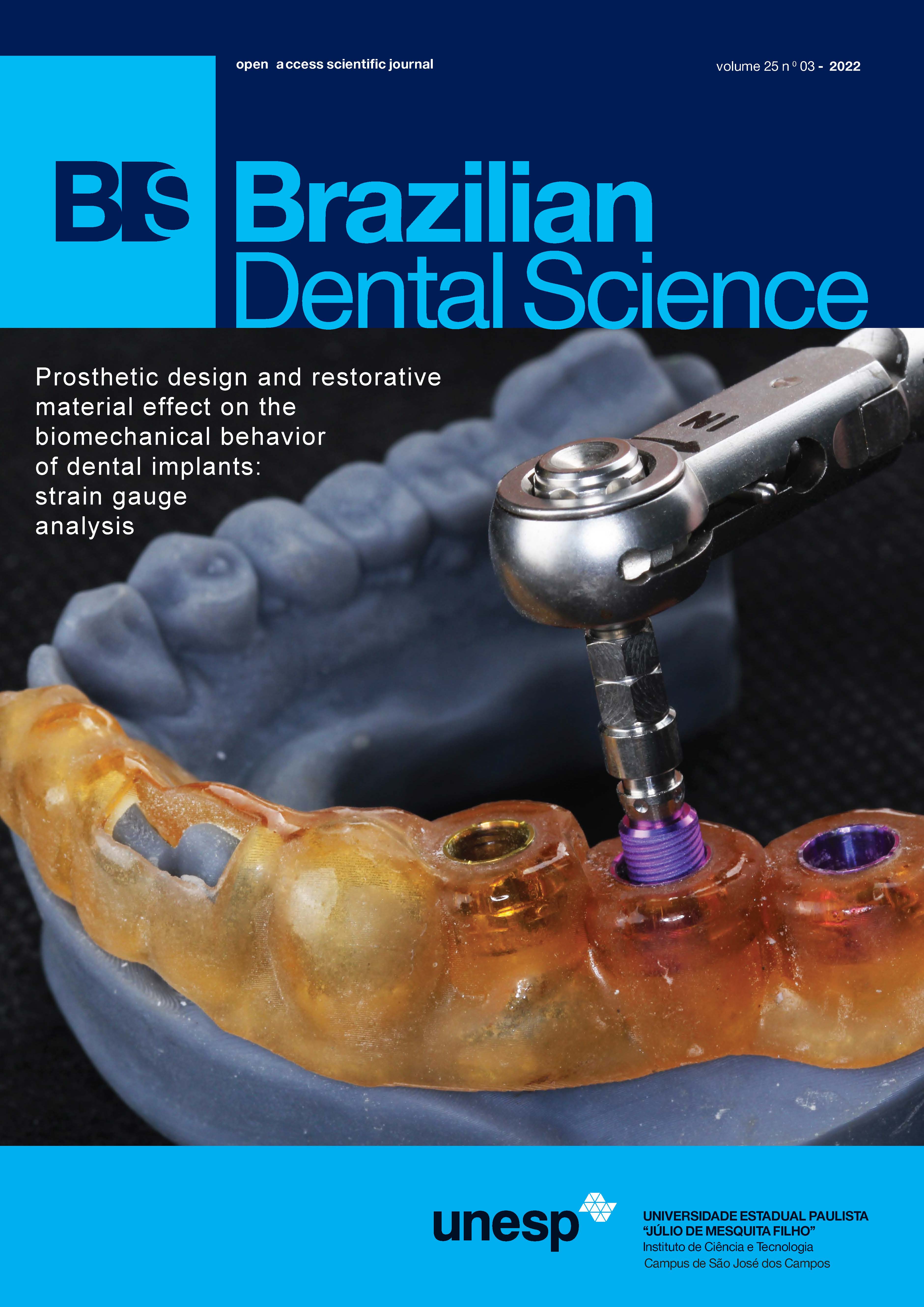Post-obturation pain and its relationship with reference time and other risk factors
DOI:
https://doi.org/10.4322/bds.2022.e3519Resumo
Objective: To evaluate incidence and intensity of postoperative pain in patients treated in the Residency Program
in Endodontics at the State University of Maringá. The influence of factors inherent to the patient and treatment
on preoperative pain was also the focus of our study. Material and Methods: 99 patients participated in this study
and underwent non-surgical endodontic treatment. Initially, palpation, vertical and horizontal percussion were
performed on the tooth to be treated. After the root canals filling, patients received a printed Numerical Rating
Scale and were instructed to record the level of pain in the postoperative periods of 24, 48 and 72 hours. For each
postoperative period, the patient recorded the values. A descriptive analysis of the data and a model of generalized
estimation equations were performed to verify the relationship between the variables and postoperative pain, at
a significance level of 5%. Results: During the follow-up period, the pain rates found were low represented by
16%, 11% and 7% in the periods of 24, 48, and 72h, respectively. In addition, the rates significantly decreased
after 72h. Only one case of flare-up was recorded. Presence of pain on palpation, use of reciprocating file and
use of 2.5% sodium hypochlorite influenced the results (p<0.05), increasing the changes of post-operative pain
by 3.36, 0.4 and 0.2 times, respectively. Conclusion: Incidence and intensity of postoperative pain monitored
in the residency program reduced significantly after 72 hours. Postoperative pain was associated with pain on
palpation, use of reciprocating files and irrigation with 2.5% hypochlorite.
KEYWORDS
Endodontics; Postoperative pain; Pain measurement; Endodontic treatment; Root canal therapy.
Downloads
Downloads
Publicado
Como Citar
Edição
Seção
Licença
TRANSFERÊNCIA DE DIREITOS AUTORAIS E DECLARAÇÃO DE RESPONSABILIDADE
Toda a propriedade de direitos autorais do artigo "____________________________________________________________________" é transferido do autor(es) para a CIÊNCIA ODONTOLÓGICA BRASILEIRA, no caso do trabalho ser publicado. O artigo não foi publicado em outro lugar e não foi submetido simultaneamente para publicação em outra revista.
Vimos por meio deste, atestar que trabalho é original e não apresenta dados manipulados, fraude ou plágio. Fizemos contribuição científica significativa para o estudo e estamos cientes dos dados apresentados e de acordo com a versão final do artigo. Assumimos total responsabilidade pelos aspectos éticos do estudo.
Este texto deve ser impresso e assinado por todos os autores. A versão digitalizada deverá ser apresentada como arquivo suplementar durante o processo de submissão.




























